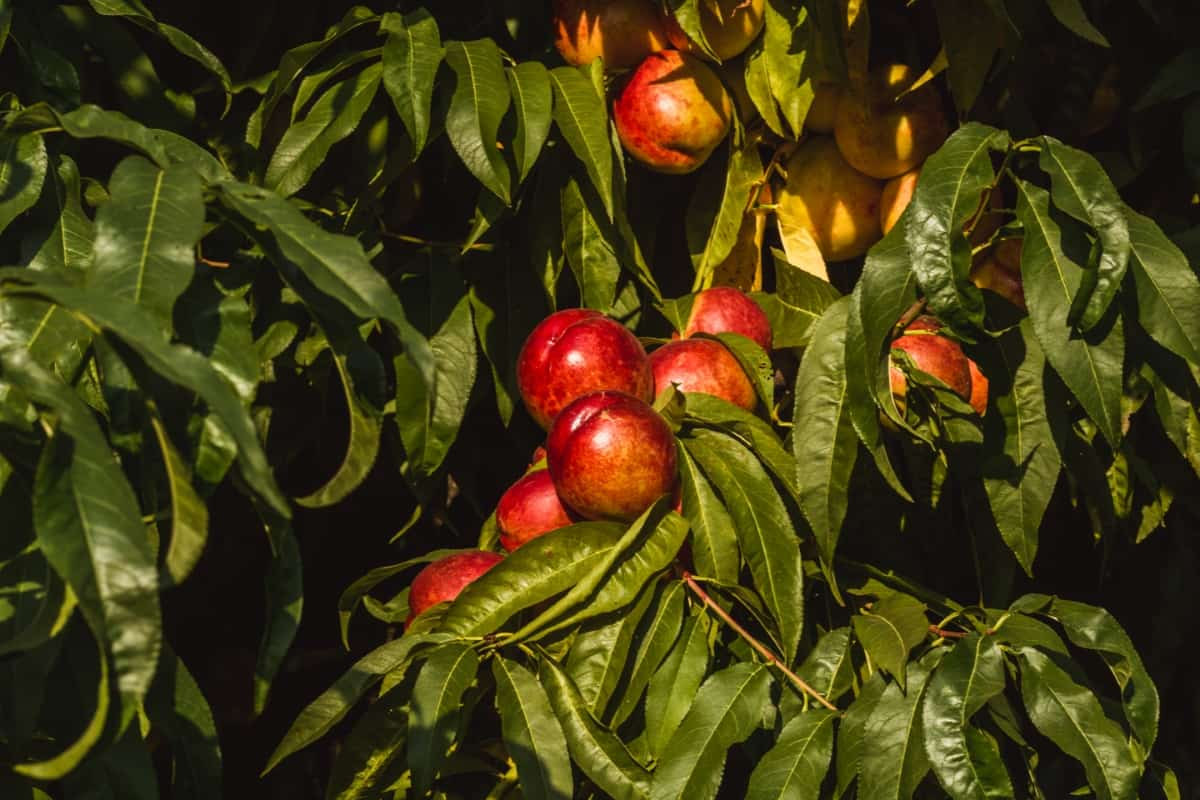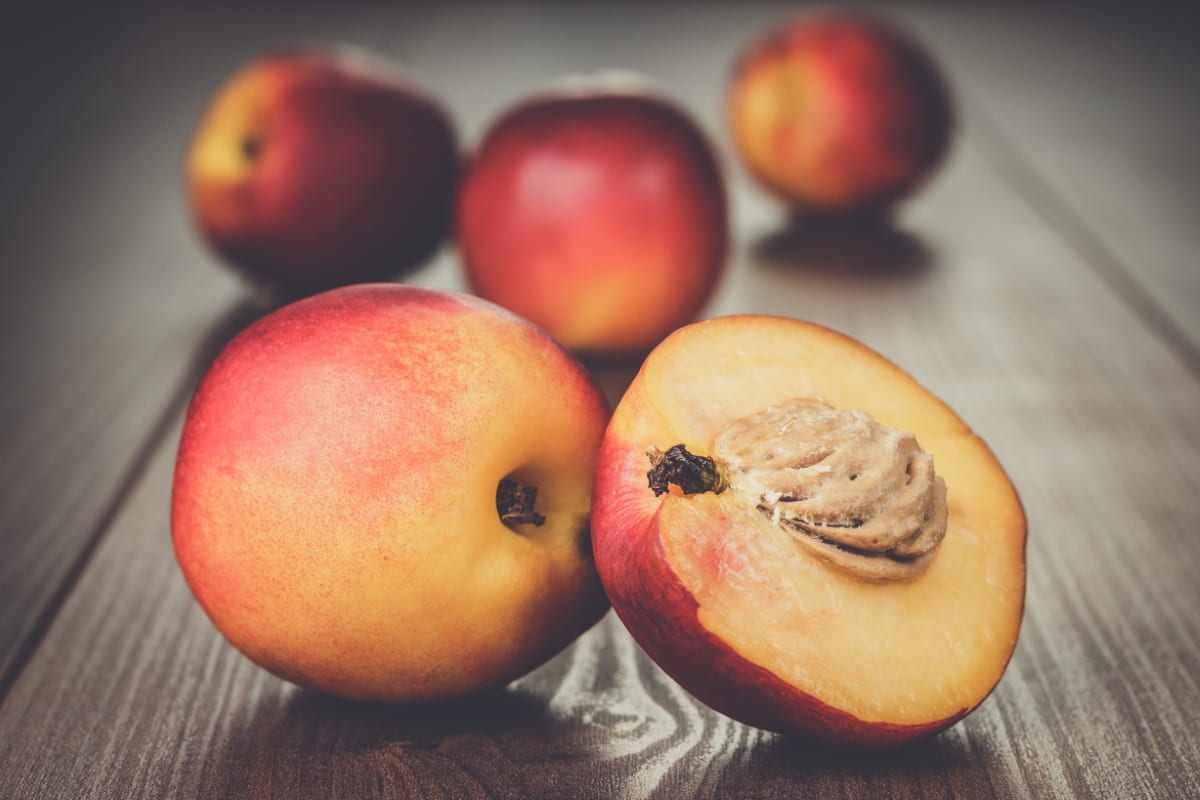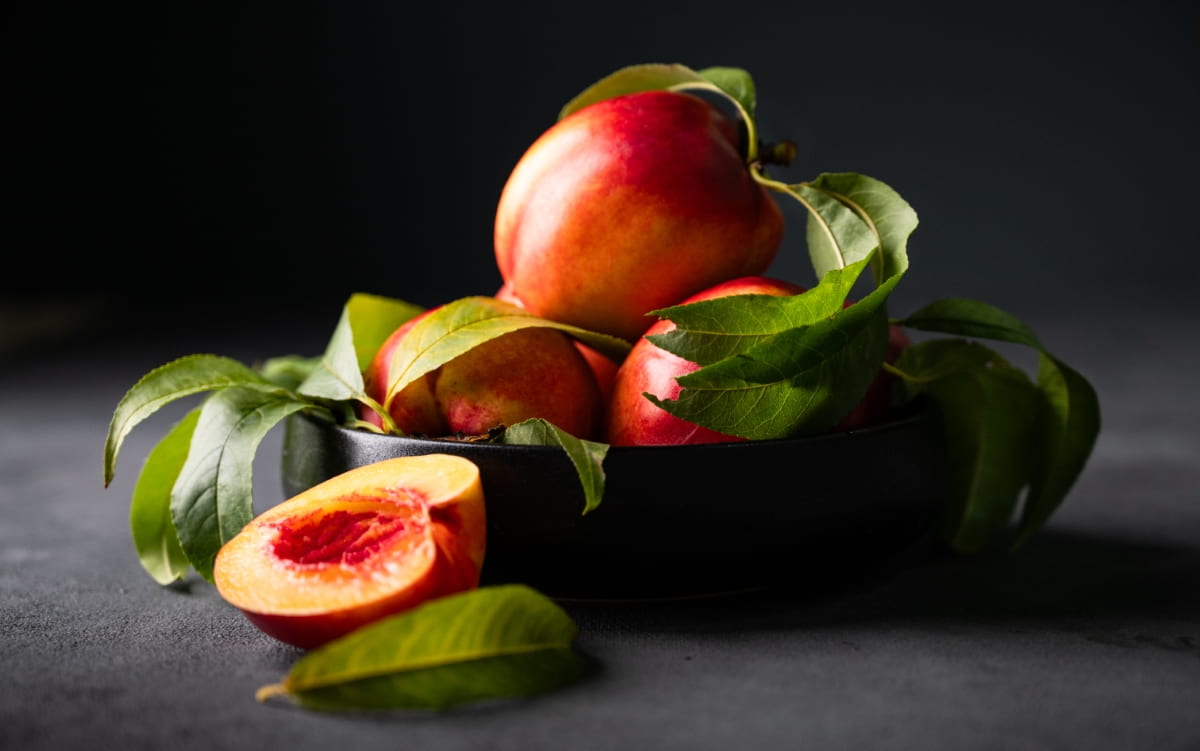When it comes to growing Nectarines from seeds, it’s important to understand the basics before getting started. First and foremost, it’s essential to choose a ripe and healthy Nectarine fruit. Next, prepare a well-drained potting mix using equal parts of peat moss, perlite, and vermiculite.
Fill a small container with this mixture and plant your Nectarine seed about an inch deep. Germination may take several weeks, so be patient. Once your seedling emerges from the soil with its first set of true leaves, you can transplant it into a larger container or directly into your garden.
Benefits of Growing from Seed
Growing Nectarines from seed can be a rewarding and fulfilling experience for beginners. Growing from seed allows you to have control over the entire process right from the very beginning. You get to select high-quality seeds and ensure that they are free of any diseases or pests. This gives you peace of mind, knowing that your tree will start healthy and strong. Additionally, growing Nectarines from seeds is cost-effective.

How to Grow Nectarine from Seed
Selecting the Right Nectarine Seeds
Choosing High-Quality Seeds
When it comes to the choosing right Nectarine Seed, Opt for fresh and viable seeds. Look for plump, firm, and undamaged seeds, as these have higher chances of sprouting successfully. Next, consider the source of your seeds. It’s advisable to purchase them from reputable nurseries or seed suppliers who specialize in fruit tree varieties. Furthermore, prioritize certified organic or heirloom varieties if possible.
Understanding Seed Varieties
When it comes to growing Nectarines from seed, understanding the different seed varieties available is essential. There are several factors to consider when choosing a seed variety. First and foremost, you’ll want to choose a variety that is suited to your climate. Another important factor to consider is whether you want a standard or dwarf variety. Additionally, there are early-ripening and late-ripening varieties available. Early-ripening varieties produce fruit earlier in the season, while late-ripening varieties extend the harvest period into late summer or even fall.
Preparing Seeds for Planting
Stratification Process
To begin Stratifying Nectarine Seeds, gather your Nectarine seeds and place them in a sphagnum moss. Seal them and store them in the refrigerator for about 8-12 weeks. This extended period of chilling helps break down any dormancy mechanisms within the seed.
During this time, be sure to check on your seeds regularly to ensure they remain moist but not overly wet. Excessive moisture can cause mold or rotting, which will hinder germination. After the recommended stratification period has elapsed, from the refrigerator remove the seeds and prepare them for planting.
Seed Cleaning and Storage
After extracting the seeds from ripe Nectarine fruits, it’s important to remove any attached flesh or debris. Gently rinse the seeds under running water to ensure they are clean. Once cleaned, lay the seeds out on a paper towel or tray to air dry completely. Allow them to dry in a well-ventilated area for about 24-48 hours. After drying, transfer the seeds into an airtight container.
Soil and Container Preparation
Choosing the Right Soil Mix
When it comes to Soil Preparation for Nectarine Seeds, Choosing the right soil mix is crucial. For starters, it’s important to use a well-draining soil mix. Nectarine trees don’t like wet feet, so ensuring good drainage is essential. You can achieve this by mixing perlite or sand into your soil mixture. Nectarine trees prefer slightly acidic soil with a pH range between 6 and 7.5. Mixing organic matter in your soil mix can also improve its fertility and moisture-retaining capabilities.
Selecting Containers for Seedlings
When it comes to growing Nectarine seedlings, choosing the right containers is crucial for their development. Opt for containers that have good drainage holes. Plastic pots or clay pots with drainage holes are both suitable options. Next, consider the size of the container. It’s best to choose a container that provides enough space for the roots to grow. As a rule, select a pot that is at least 12 inches deep and wide. Additionally, look for containers made from durable materials that can withstand outdoor conditions.
How to Grow Nectarine from Seed How to Increase Apple Fruit Size: Management for Getting Bigger Apple Fruits in Your Orchard

Sowing the Seeds
Proper Depth and Spacing
When it comes to Nectarine Tree Planting Tips, planting seeds at the right depth ensures that they receive enough moisture while still being able to push through the soil. It’s recommended to plant Nectarine seeds at a depth of about 1 inch in well-draining soil. Spacing between seedlings is equally important as it allows each tree to access sufficient nutrients without competing with neighboring plants. For optimum growth, leave a gap of around 15-20 feet between each sapling.
Ideal Conditions for Germination
Nectarine seeds thrive in warm environments, so aim for a consistent temperature between 21-29°C. Moisture is another critical factor. Regularly misting the soil surface with water can help maintain adequate moisture levels. Providing good air circulation around your seedlings is also important. This helps prevent fungal diseases and encourages strong growth.
Caring for Nectarine Seedlings
Watering and Feeding
When it comes to Caring for Nectarine Seedlings, proper hydration ensures that the seeds receive enough moisture to germinate. To water your Nectarine seeds, use a gentle spray or mist so as not to disturb the delicate roots. Ensure that the soil moist but not waterlogged. Feeding your Nectarine seedlings with nutrients is equally important for their growth and development. Organic fertilizers rich in nitrogen, phosphorus, and potassium are ideal choices for providing essential nutrients.
Managing Sunlight and Temperature
In terms of temperature, Nectarines prefer a moderate climate. It performs best in regions where the average annual temperature ranges between 10°C to 29°C. It’s important to note that extreme heat or cold can stress or even damage young Nectarine plants. To manage sunlight exposure, consider planting your seedlings in an area that gets sufficient sunlight throughout the day. If you’re growing indoors, use grow lights to supplement natural light and ensure proper intensity.
Transplanting Nectarine Seedlings Outdoors
Timing and Location Considerations
When it comes to timing, it’s essential to sow the seeds during the right season. Nectarine seeds should be planted in late winter or early spring when the soil temperature starts to warm up. As for location, choose a spot that receives full sunlight throughout the day. Nectarine trees thrive in sunny locations as they require six hours of direct sunlight daily. Ensure that there is enough space for the tree to grow without any obstructions.
Acclimatizing Seedlings to Outdoor Conditions
Start by gradually exposing the seedlings to outdoor conditions. Begin with short periods outside, gradually increasing both the duration and intensity of sunlight exposure over several days or weeks. Choose calm days without extreme weather conditions for this process. Avoid placing seedlings directly under intense sunlight, as they may get sunburned. During this acclimation period, closely monitor soil moisture levels. Seedlings may dry out more quickly when exposed to outdoor conditions due to increased wind and sunlight exposure.
Pruning and Training Young Nectarine Trees
Basic Pruning Techniques
Pruning Young Nectarine Trees is an essential practice when it comes to growing Nectarine trees from seed. By removing certain parts of the plant, you can shape its growth, promote better fruit production, and prevent diseases. It’s important to prune your Nectarine tree during dormancy in late winter or early spring. This allows the wounds to heal quickly before new growth begins. Start by removing any dead branches with clean pruners. Next, thin out crowded areas by cutting backcrossing branches or those that grow towards the center of the tree.
Training for Optimal Growth
By providing the right support and guidance, you can help your young Nectarine tree develop a strong structure and produce abundant, high-quality fruits. One important aspect of training is pruning. Regularly pruning your Nectarine tree helps maintain its shape, promote airflow through the branches, and remove any damaged or diseased wood.
In case you missed it: Orange Gardening For Beginners, How To Start, FAQs

Pest and Disease Management in Nectarine Trees
Identifying Common Threats
When growing Nectarines from seed, it’s important to be aware of the common threats that can hinder their growth. One common threat to Nectarine trees is pests. Aphids, mites, and fruit flies are just a few examples of pests that can damage the leaves and fruits of your plants. Regularly checking trees for signs of infestation, such as discolored or wilting leaves, sticky residue, or small holes in the fruit, will help you catch these pesky critters before they cause significant damage.
Another threat to watch out for is diseases. Nectarine trees are susceptible to fungal infections like peach leaf curl and brown rot. These diseases can lead to defoliation and fruit decay if left untreated. Keep an eye out for symptoms such as distorted leaves or moldy spots on the fruits.
Organic Control Methods
When it comes to pests and diseases in Nectarine trees, many people are turning to organic control methods. One effective method of pest management is the use of beneficial insects. Ladybugs, lacewings, and parasitic wasps can be introduced into the orchard to prey on common pests like aphids and caterpillars. Another organic approach is companion planting. By interplanting certain flowering plants or herbs among your Nectarine trees, you can create a diverse ecosystem that attracts beneficial insects while repelling pests.
Harvesting and Propagation of Nectarine
Knowing When to Harvest
Harvesting Nectarines is an exciting moment for any gardener. First and foremost, pay attention to the color of the fruit. Nectarines should have vibrant hues of yellow, orange, or red when they are ripe. Additionally, gently press the skin with your thumb – if it yields slightly and feels soft but not mushy, that’s a good sign it’s ready.
Another indicator of ripeness is aroma. Ripe Nectarines emit a sweet fragrance that can be detected even before reaching them. Take a whiff near the stem end – if there’s a pleasant scent, it means they’re likely ripe. Size also matters when determining whether your Nectarine is ready for harvest. The fruit should have reached its full size and feel plump in your hand.
Propagating from Mature Trees
One of the most rewarding ways to grow Nectarines is by propagating them from mature trees. To propagate from a Nectarine tree, you can use several techniques, such as grafting or air layering. Grafting requires some knowledge, but it can be a fun and satisfying process once you get the hang of it. It’s important to choose healthy branches for grafting and make clean cuts using sharp tools. The scion should be carefully aligned with the rootstock, ensuring good contact between their cambium layers for successful fusion.
On the other hand, air layering is a simpler technique that doesn’t require much expertise. It involves making an incision on a lower branch of the mature tree and wrapping it with moist sphagnum moss covered in plastic wrap. This creates a favorable environment for roots to form while still receiving nutrients from the parent plant.
In case you missed it: Growing Lemon Trees Hydroponically – For Beginners

Conclusion
Growing Nectarines from seed can be a rewarding and fulfilling experience for beginners. By understanding the basics of seed selection, stratification, and germination, as well as providing the right conditions for growth, you can successfully grow your Nectarine tree. Growing Nectarines may require some effort initially, but with time and dedication, you’ll enjoy bountiful harvests of this delicious fruit year after year.
- How to Grow Hibiscus from Flower
- Plantation Ideas for Home Decoration: A Beginners Guide
- Flower Garden Designs and Layouts for Beginners
- Planting and Spacing Techniques in Papaya: A Beginner’s Guide
- Growing Gold: Essential Techniques for Planting Pineapples
- How to Make Kalanchoe Plant Bushy: Home Remedies and Solutions
- 11 Reasons Why Your Gardenia is Not Blooming: Home Remedies and Solutions
- Eco Elegance: The Guide to Designing a Drought-Tolerant Landscape
- Gardening on a Slope: Strategies for Hillside Landscaping